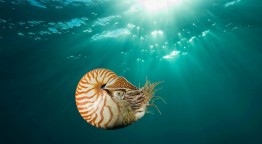Karl Lang speaks as if being a geologist was his destiny. “I’ve always been interested in geology,” says Lang, who as a child was fascinated by rocks and fossils. He went on to study Geology and Economics at the College of William and Mary in Virginia and is now a PhD student in the Department of Earth and Space Sciences at the UW College of the Environment.
Read more »Fossil raindrop impressions imply greenhouse gases loaded early atmosphere
In ancient Earth history, the sun burned as much as 30 percent dimmer than it does now. Theoretically that should have encased the planet in ice, but there is geologic evidence for rivers and ocean sediments between 2 billion and 4 billion years ago. Scientists have speculated that temperatures warm enough to maintain liquid water were the result of a much thicker atmosphere, high concentrations of greenhouse gases or a combination of the two.
Read more at UW Today »UW scientist and team call for a new way to classify planets
Thousands of planets will likely be discovered in the next few years, and a new system is needed to better classify the ability of those worlds to support life. In a paper to be published in the December 2011 issue of Astrobiology, co-author David Catling from the Department of Earth and Space Sciences and colleagues propose a new system that classifies some planets as either similar to Earth or not similar but capable of harboring life.
Read more at The Seattle Times »Loving the chambered nautilus to death
It is a living fossil whose ancestors go back a half billion years—to the early days of complex life on the planet, when the land was barren and the seas were warm. Naturalists have long marveled at its shell. The logarithmic spiral echoes the curved arms of hurricanes and distant galaxies. In Florence, the Medicis turned the pearly shells into ornate cups and pitchers adorned with gold and rubies.
Read more at The New York Times »



